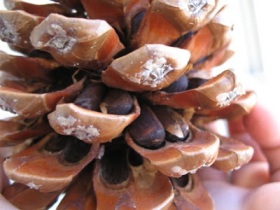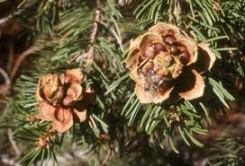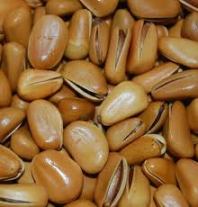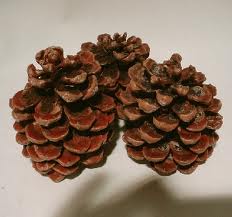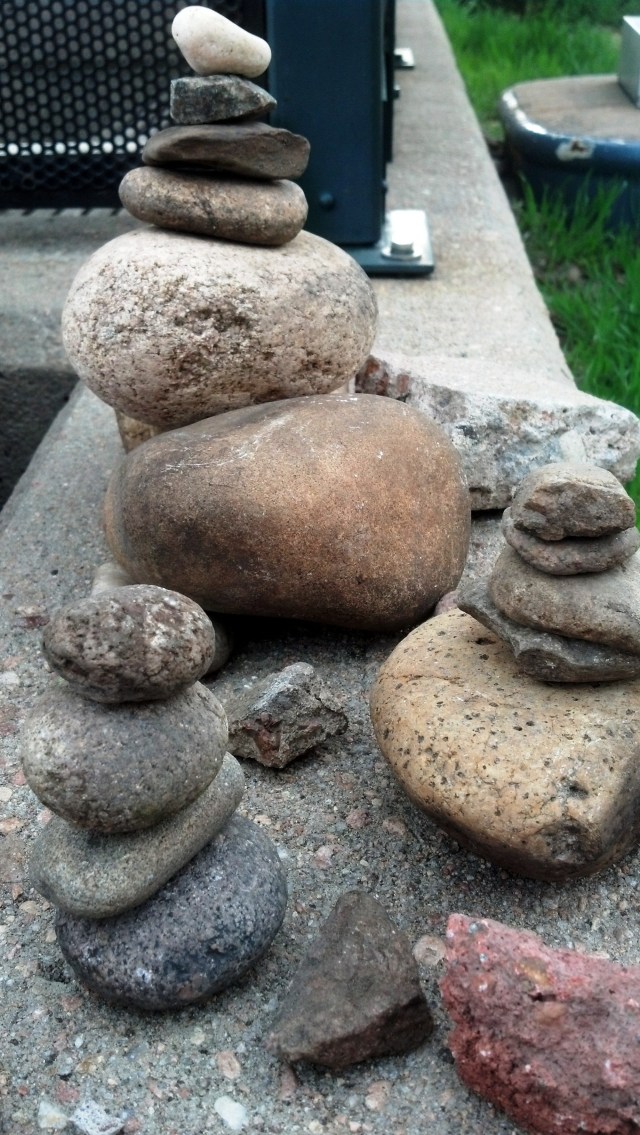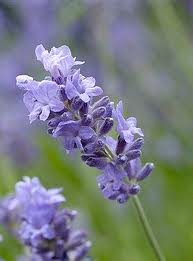 Cinnamon comes from the inner bark of evergreen trees native to Sri Lanka, southwest India, and Asia. After it is peeled away from the tree this, this brown bark curls up into tubes called “quills” as it dries.
Cinnamon comes from the inner bark of evergreen trees native to Sri Lanka, southwest India, and Asia. After it is peeled away from the tree this, this brown bark curls up into tubes called “quills” as it dries.
In addition to its use as a spice, cinnamon or its oil is used as a flavoring agent in pharmaceutical, personal health, and cosmetic products. It is also often used as incense.
Cinnamon is available either as cinnamon sticks (whole quills) or as a ground up powder.
Cinnamomum verum, Cinnamomum zeylanicum (Ceylon Cinnamon), and Cinnamomum amoraticum (Chinese cinnamon) are the most popular of the more than two hundred varieties of cinnamon. Many consider Ceylon cinnamon to be “true cinnamon,” while the Chinese variety is known as “cassia.”
While both are relatively similar in characteristics, featuring an aromatic, sweet, and warming nature, the flavor of the Ceylon variety is more refined and subtle.
In North America cassia is more popular, probably due to its cheaper price, whereas Ceylon cinnamon is less commonly found and used.
History
Cinnamon is one of the oldest spices known. It was used in ancient Egypt not only as a beverage flavoring and medicinal herb, but also as an embalming agent. At one point in ancient history, cinnamon was so highly treasured it was considered more precious than gold.
 Cinnamon also received much attention in ancient China, which is reflected in its mention in one of the earliest books on Chinese botanical medicine, a reference which dates to around 2700 B.C.E.
Cinnamon also received much attention in ancient China, which is reflected in its mention in one of the earliest books on Chinese botanical medicine, a reference which dates to around 2700 B.C.E.
It is also mentioned in the Bible, and reportedly, Nero, the emperor of Rome in the first century C.E., burned a year’s supply of cinnamon in his wife’s funeral pyre as an extravagant gesture meant to signify the depth of his loss.
As the popularity of cinnamon continued to flourish, it became one of the most utilized spices in Medieval Europe. During the Middle Ages most meals were prepared in a single cauldron; casseroles containing both meat and fruit were common, and cinnamon helped bridge the flavors. Mince pie is a traditional food from this period that still survives today.
Due to its great demand during the late Middle Ages, cinnamon became one of the first commodities traded regularly between Europe and the Near East. The demand for cinnamon was enough to launch a number of explorer’s enterprises, especially explorations by the Dutch and Portuguese.
In modern times, cassia is mainly produced in China, Vietnam, and Indonesia, while Ceylon cinnamon is produced in Sri Lanka, India, Madagascar, Brazil, and the Caribbean.
Health Benefits
Cinnamon has a long history of use in both Eastern and Western cultures as a medicine. Some of its reported uses are in cases of arthritis, asthma, cancer, diarrhea, fever, heart problems, insomnia, menstrual problems, peptic ulcers, psoriasis, and spastic muscles.
There are scientific studies to support some of these uses. Some of the confirmed effects of cinnamon are as a sedative for smooth muscle, circulatory stimulant, carminative, digestant, anticonvulsant, diaphoretic, diuretic, antibiotic, and antiulcerative.
 One recent investigation of sixty people with type 2 diabetes demonstrated that 1 to 6 grams of cinnamon taken daily for forty days reduced fasting blood glucose by 18 to 29 percent, triglycerides by 23 to 30 percent, LDL (“bad”) cholesterol by 7 to 27 percent, and total cholesterol by 12 to 26 percent. In contrast there were no clear changes for the subjects who did not take cinnamon.
One recent investigation of sixty people with type 2 diabetes demonstrated that 1 to 6 grams of cinnamon taken daily for forty days reduced fasting blood glucose by 18 to 29 percent, triglycerides by 23 to 30 percent, LDL (“bad”) cholesterol by 7 to 27 percent, and total cholesterol by 12 to 26 percent. In contrast there were no clear changes for the subjects who did not take cinnamon.
Cinnamon’s unique abilities come from three basic components in the essential oils found in its bark. These oils contain active components called cinnamaldehyde, cinnamylacetate, and cinnamyl alcohol, plus a wide range of other volatile substances.
Cinnamon is often used in multicomponent Chinese herbal formulas, some of which have been studied for clinical effects. For example, cinnamon combined with Chinese thoroughwax (Bupleurum falcatum) and Chinese peony (Paeonia lactiflora) was shown to produce satisfactory results in the treatment of epilepsy. Out of 433 patients treated (most of whom were unresponsive to anticonvulsant drugs), 115 were cured and and another 79 improved greatly.Improvements were noted not only by clinical symptoms, but also by improvements in brain wave patterns.
Other clinical studies have shown cinnamon-containing formulas to be useful in cases of the common cold, influenza, and frostbite. However it is not really known to what degree the improvements noted are actually due to the cinnamon versus the other components.
Energetic and Magical Properties
 Gender: Masculine
Gender: Masculine
Planet: Sun
Element: Fire
Influences: Spirituality, Success, Healing, Power, Psychic Powers, Lust, Protection, Love
When cinnamon is burned it raises the spiritual vibrations of the area where it is smouldering. This energy can be used in all manners of spells, healing work, or even just meditation and prayer.
To draw money to you sprinkle some powdered cinnamon inside your wallet, and to help a business do well place some cinnamon powder under the doormat after asking it to bring customers.
In matters of love and passion, cinnamon can be used to heat up a romance or to attract lovers. It can also raise psychic awareness, especially if burned with sandalwood.
Sprinkle in the corners of your home if you seek energetic protection.
Cinnamon’s lovely taste also makes this a great inclusion when using food magic. Simply ingest the food you prepared after asking the cinnamon to bestow upon you the attribute you desire.
How to Select and Store
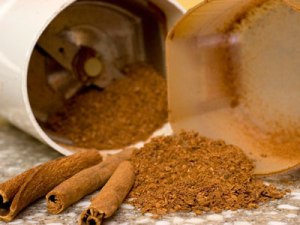 Cinnamon is available in either stick or powder form, though most recipes call for the ground powder. You can grind cinnamon sticks into powder on your own if you have a spice grinder; otherwise it is quite difficult. Just as with other dried spices, choose organically grown cinnamon when possible, since organic spices are are much less likely to have been irradiated.
Cinnamon is available in either stick or powder form, though most recipes call for the ground powder. You can grind cinnamon sticks into powder on your own if you have a spice grinder; otherwise it is quite difficult. Just as with other dried spices, choose organically grown cinnamon when possible, since organic spices are are much less likely to have been irradiated.
Remember if you want a, sweeter, more refined taste, choose the Ceylon variety. Fortunately it is becoming more widely available.
Ground cinnamon as well as sticks should be kept in a tightly sealed glass container in a cool, dark and dry place. Ground cinnamon will keep for about six months, while whole sticks may stay fresh for as long as a year. The best judge of freshness is your nose.
Tips for Use
Cinnamon is vital to Indian, Moroccan, Indonesian, Middle Eastern, Greek, Chinese, and many other cuisines. It is an extremely versatile spice that compliments a wide variety of foods and other spices. Cinnamon works well with pultry, in curries, and with fruit, particularly apples and pears.
*Safety*
Cinnamon contains moderate amounts of oxalate. Individuals with a history of oxalate-containing kidney stones should avoid over-consumption of this food.
Nutritional Information per 100 Gram Serving
Calories: 261
Carbohydrates: 79.85 g
Fat: 3.19 g
Protein: 3.89 g
Fiber: 54.3 g
Water: 9.52 g
Stearic Acid: 0.005 g
Oleic Acid: 0.45 g
Linoleic Acid: 0.53 g
Linolenic Acid: 0 g
Arachidonic Acid: 0 g
EPA: 0 g
DHA: 0 g
Cholesterol: 0 mg
Monounsaturated Fat: 0.48 g
Polyunsaturated Fat: 0.53 g
Saturated Fat: 0.65 g
Calcium: 1228 mg
Copper: 0.233 mg
Iron: 38.07 mg
Magnesium: 56 mg
Manganese: 16.667 mg
Phosphorous: 61 mg
Potassium: 500 mg
Selenium: 1.1 mg
Sodium: 26 mg
Zinc: 1.97 mg
Folic Acid: 0 mcg
Niacin: 1.3 mg
Pantothenic Acid:0 mg
Riboflavin: 0.14 mg
Thiamine: 0.077 mg
Vitamin A: 260 IU
Vitamin B12: 0 mcg
Vitamin B6: 0.31 mg
Vitamin C: 28.5 mg
Vitamin E:0.01 mg
Vitamin K: 0 mg
Recipes which Include Cinnamon:
This article was adapted from:
The Encyclopedia of Healing Foods by Michael Murray N.D. and Joseph Pizzorno N.D. with Lara Pizzorno M.A. , L.M.T.
With Additional Information from:
The Complete Illustrated Encyclopedia of Magical Plants by Susan Gregg
Cunningham’s Encyclopedia of Magical Herbs by Scott Cunningham
The Herb Book by John Lust
Pictures pulled from Google.com
 This elegantly simple ritual is phenomenal for connecting and communicating with the energies, spirits and deities around you. No words need to be spoken, yet everything is understood.
This elegantly simple ritual is phenomenal for connecting and communicating with the energies, spirits and deities around you. No words need to be spoken, yet everything is understood.

 Pine nuts, also called pignoli, piñons, and Indian nuts, depending on the variety, are the seeds of various species of pine trees. Of the more than one hundred pine tree species around the world, about a dozen in the Northern Hemisphere yield desirable seeds, the three most prevalent being the Pinus pinea (Mediterranean stone pine), Pinus cembroides (Mexican nut pine), and Pinus edulis (piñon pine of the south-western United States).
Pine nuts, also called pignoli, piñons, and Indian nuts, depending on the variety, are the seeds of various species of pine trees. Of the more than one hundred pine tree species around the world, about a dozen in the Northern Hemisphere yield desirable seeds, the three most prevalent being the Pinus pinea (Mediterranean stone pine), Pinus cembroides (Mexican nut pine), and Pinus edulis (piñon pine of the south-western United States).

